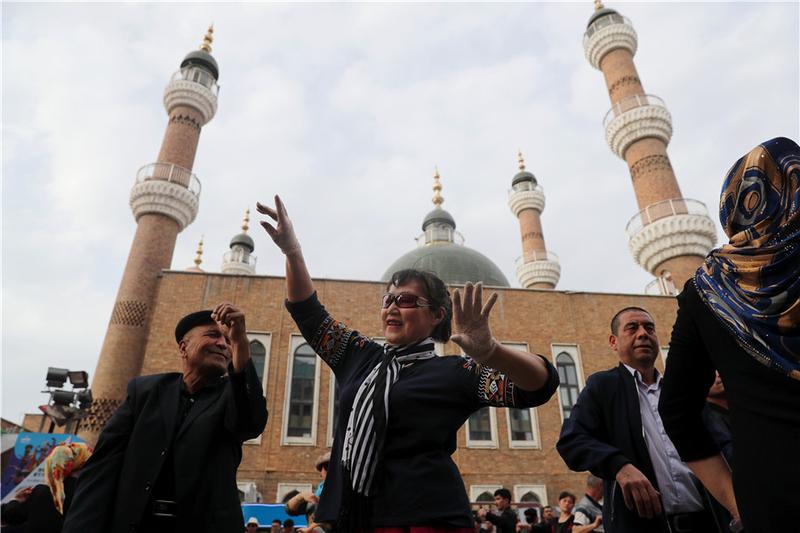



The history of Xinjiang Uygur Autonomous Region in northwest China shows that multiple religions have long coexisted there, with one or two predominant, and the region's religious structure is characterized by blending and coexistence, a white paper said Sunday.

Local residents dance at the International Grand Bazaar in Urumqi, capital of Xinjiang, in April. [Photo/China Daily]
Xinjiang has multiple religions, including Islam, Buddhism, Taoism, Protestantism, Catholicism, and the Eastern Orthodox Church. It has 24,800 venues for religious activities, including mosques, churches, Buddhist and Taoist temples, with 29,300 religious staff, said "Historical Matters Concerning Xinjiang" released by China's State Council Information Office.
"Xinjiang always upholds equality for all religions, showing neither favoritism towards nor discrimination against any religion and allowing no religion to be superior to any other religion," said the white paper.
Believers and non-believers enjoy equal rights and obligations, and all law violators, whatever their social background, ethnicity, and religious belief, will be punished in accordance with the law, the white paper said.
